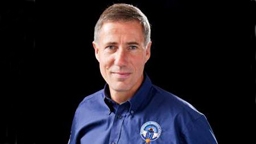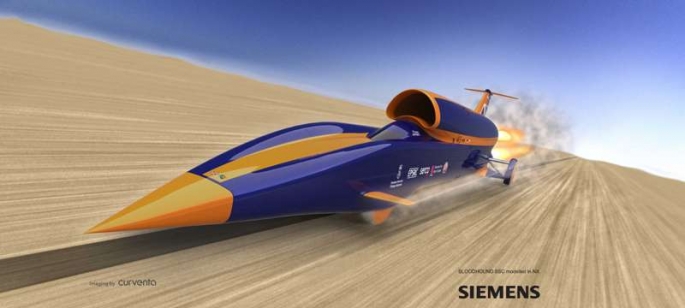
- Andy Green Presents SAIMechE John Orr Memorial Lecture
- 1600 kph BLOODHOUND Land Speed Project to Run in South Africa 2013
- Press Conference 10:00hrs, 14th November, Sci Bono, Johannesburg
On November 15th, Land Speed Record (LSR) Holder Andy Green will kick off a two-week lecture tour of South Africa with a presentation at University of the Witwatersrand, Johannesburg. The only person to have broken the sound barrier on land, Green will travel the country, from Hakskeen Pan to Cape Town, sharing his record breaking experiences and telling audiences about his new adventure: the 1600kph (1000 mph) BLOODHOUND Project, coming to South Africa in 2013.
2011 marks the 50th anniversary of the John Orr Memorial Lecture, run by The SA Institution of Mechanical Engineering. South Africa’s longest-running science event, the Lecture Series has been staged annually since 1961 and commemorates Professor John Orr, one of the country’s most distinguished engineers.
In October 1997 Andy Green, then, as now, a serving officer with the RAF, set a new Land Speed Record of 1228 kph (763mph). A small team lead by former LSR holder Richard Noble defied the odds, and the scientific convention of the day, to break the sound barrier – a feat many thought impossible. Their record still stands.
Today Andy Green, Richard Noble and many of the Thrust SSC team are engaged on a new and far more ambitious project: to build a car capable of achieving 1600kph.
The BLOODHOUND Project is not, however, primarily, about speed.
Rather, it is an international education initiative aimed at inspiring the next generation of scientists, engineers and mathematicians by demonstrating these subjects in the most exciting way possible. The unique nature of the Land Speed Record, where the challenge comes from confronting the laws of physics rather than other teams with similar technology, means the BLOODHOUND Project can share all its data, designs, achievements and setbacks in the process.
Consequently, the Project is already being followed in 207 countries, with c. 7m students able to access BLOODHOUND information and lesson materials in class. The Team has presented to over 100,000 people since its launch at London’s Science Museum in October 2008 and full 3D design plans for the car were recently released on the internet.
Andy Green will visit a number of schools during his Lecture Tour, including Groot Mier Primary, located just 6km from the BLOODHOUND race track, on Saturday 19th November.
Meanwhile, Dave Rowley, from BLOODHOUND’s education team, will be based full-time in the country developing links with schools, colleges and universities.
In his John Orr talk, Andy will detail the remarkable engineering that allows BLOODHOUND SSC to accelerate from 0-1600kph and back to zero in just 100 seconds while safely handling the phenomenal forces and loads acting upon it, such as: 47,000 lbs thrust (equivalent to 133,000 thp) generated by its jet and rocket engines; 30 tonne suspension loadings; air pressures on the bodywork of up to 10 tonnes per square metre; and solid aluminium wheels, each weighing 90 kg, spinning at 10,200 rpm and generating an extraordinary 50,000 G at the rim.
It may be the world’s most powerful land vehicle, but BLOODHOUND SSC needs a very special track to run on if it is ever to break records.
As soon as The Project was launched, the search for a run site began. With the car designed specifically for the one environment in which it would run, getting the right location was critical. Clearly BLOODHOUND needed a wide, open area of very flat land. Given that the car runs on solid wheels (no tyres being able to withstand the colossal rotational forces), the ground surface was just as important; the priority was to find a dry lake bed which would afford a slight degree of ‘give’ and thereby cushion the car’s ride.
A UK university created a bespoke computer programme to scour satellite earth observation imagery and assess over 20,000 potential sites. Green then flew around the world to check favoured locations in person and conduct detailed on the ground investigations.
After two years, and several ‘near misses’, the perfect run site was identified: Hakskeen Pan in the Northern Cape. Supported by the Northern Cape Government the local community, with some volunteers, have begun the task of preparing the area ahead of the first high speed runs in 2013.
In addition to Johannesburg, Andy Green will be visiting the following cities on his Tour:
Kimberly - 17th November, William Humphreys Art Gallery
Cape Town - 22nd November, University of Cape Town
Port Elizabeth – 23rd November, Nelson Mandela Metropolitan University
Durban – 24th November, University of Kwa-Zulu Natal



